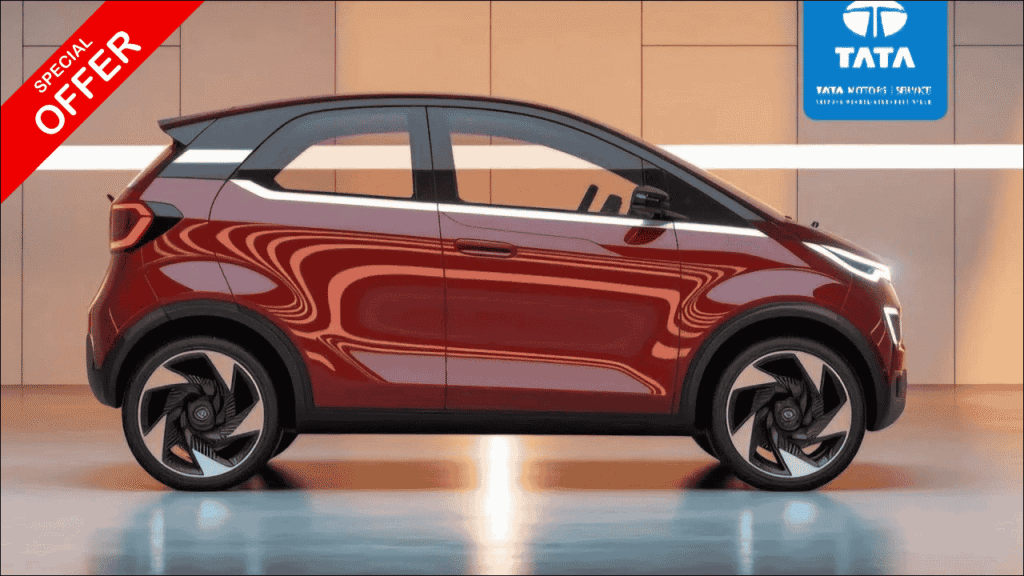
The Tata Nano stands as one of the most revolutionary automobiles in automotive history, earning its legendary status as the “People’s Car” that made four-wheeler ownership accessible to millions of Indian families. While production officially concluded in 2020, the used car market presents an exceptional opportunity for budget-conscious buyers to experience this engineering marvel. With its unique combination of unmatched affordability, intelligent interior design, and surprisingly capable performance, the Tata Nano continues to deliver extraordinary value for first-time car buyers or those seeking an economical city commuter that doesn’t compromise on essential features.
Table of Contents
Revolutionary Engineering at Affordable Prices
When Tata Motors launched the Nano in 2008, it challenged every conventional automotive principle by proving that a safe, comfortable four-wheeler could cost no more than a premium motorcycle. This visionary project, championed by Ratan Tata, aimed to transition millions of Indian families from two-wheelers to four-wheelers, providing enhanced safety, weather protection, and comfort without financial strain.
The Nano’s engineering achievements continue to influence global automotive design, demonstrating how intelligent manufacturing processes and innovative cost-optimization can deliver functional vehicles at unprecedented price points. Despite market challenges during its production run, the car’s fundamental engineering excellence and cost-effectiveness principles remain relevant for budget-conscious buyers today.
Efficient Powerplant with Impressive Performance
At the heart of the Tata Nano lies a remarkably efficient 624cc petrol engine that delivers surprising performance considering its compact size. This rear-mounted, two-cylinder powerplant produces approximately 35 horsepower and 51 Nm of torque, providing adequate power for city driving while prioritizing fuel efficiency and reliability over raw performance.
Complete Technical Specifications
| Specification | Details |
|---|---|
| Engine Type | 2-cylinder, petrol, rear-mounted |
| Displacement | 624cc |
| Power Output | 35 HP @ 5,500 RPM |
| Torque | 51 Nm @ 4,000 RPM |
| Transmission | 4-speed manual |
| Fuel Tank Capacity | 15 liters |
| Fuel Efficiency | 20-25 kmpl |
| Top Speed | 105 km/h |
| Kerb Weight | 600 kg (approximately) |
The Nano’s lightweight construction, weighing just 600 kilograms, contributes significantly to its impressive fuel economy of 20-25 kilometers per liter, making it one of the most fuel-efficient cars ever produced. This exceptional mileage translates to substantial savings on fuel costs, particularly valuable for budget-conscious buyers managing tight transportation budgets.
Intelligent Interior Design Maximizing Space
Despite compact exterior dimensions, the Tata Nano’s interior design demonstrates masterful space utilization through clever engineering solutions. The cabin comfortably accommodates four adults, with the upright seating position and large windows creating an unexpectedly airy atmosphere that contradicts the car’s small footprint.
The dashboard emphasizes functionality with a simple, intuitive layout placing essential controls within easy reach. While early models featured basic amenities, later variants offered significant improvements including air conditioning, power windows, and enhanced interior materials that elevated the ownership experience considerably.
Storage solutions throughout the cabin showcase thoughtful design, featuring strategically placed door pockets, glove compartments, and cup holders that maximize utility within limited space. The rear seats fold to create additional cargo capacity, making the Nano surprisingly practical for its size category.
Current Market Pricing and Variant Options
With production discontinued, the used car market represents the primary avenue for Nano acquisition. Current prices vary significantly based on model year, variant, condition, and mileage, offering options across different budget ranges.
Used Car Market Analysis
| Model Year | Price Range | Typical Mileage | Key Features |
|---|---|---|---|
| 2008-2010 | ₹50,000 – ₹1.20 lakh | 40,000-80,000 km | Basic variants, manual windows |
| 2011-2014 | ₹1.00 – ₹2.00 lakh | 30,000-60,000 km | Improved reliability, better features |
| 2015-2018 | ₹1.50 – ₹2.80 lakh | 15,000-40,000 km | Latest features, enhanced safety |
| 2019-2020 | ₹2.00 – ₹3.50 lakh | 5,000-20,000 km | Nearly new condition, limited availability |
Key Advantages and Benefits
- Exceptional Affordability: Lowest ownership costs across purchase price, insurance, maintenance, and fuel expenses
- Urban Maneuverability: Compact dimensions enable effortless parking and navigation in congested city areas
- Outstanding Fuel Economy: 20-25 kmpl efficiency significantly reduces transportation costs
- Weather Protection: Complete four-wheeler comfort compared to two-wheeler exposure
- Low Maintenance Costs: Simple mechanical design keeps service expenses minimal
- Easy Availability: Extensive Tata service network ensures continued support and spare parts
- Environmental Efficiency: Lower emissions and carbon footprint compared to larger vehicles
- Perfect First Car: Ideal for new drivers learning four-wheeler operation and city driving
- Backup Vehicle: Excellent secondary car for families needing additional transportation
- Collector Interest: Discontinued status creates niche appeal among automotive enthusiasts
Maintenance and Service Considerations
Tata Motors continues providing comprehensive service support for existing Nano owners through its extensive network across India. Spare parts remain readily available, though some specialized components for newer variants may require longer lead times. The straightforward mechanical design keeps maintenance costs exceptionally low, with routine servicing typically costing ₹2,000-₹4,000 depending on service requirements.
Regular maintenance focuses on engine oil changes, filter replacements, and basic electrical system checks. The car’s simple design allows most local mechanics to handle routine repairs, though complex issues should be addressed at authorized service centers ensuring proper diagnostics and genuine parts usage.
Smart Buying Strategy
When considering a used Tata Nano purchase, thorough inspection becomes crucial for ensuring value and reliability. Check carefully for accident signs, flood damage, or excessive wear patterns. Verify all electrical systems function properly, especially air conditioning in equipped variants. Engine condition assessment should include checking for unusual noises, smooth idle operation, and proper temperature regulation.
Documentation verification ensures smooth ownership transfer and prevents legal complications. Insist on reviewing original registration documents, insurance papers, pollution certificates, and complete service history when available.
Investment and Value Retention
While the Nano may not appreciate like classic automobiles, well-maintained examples hold their value reasonably well in the used car market. The discontinued status has created collector interest, particularly for pristine examples of unique variants like automatic transmission GenX models.
For maximum value retention, focus on newer models with comprehensive service records, original documentation, and minimal modifications. Limited edition variants or unique color schemes may command premium prices among enthusiasts and collectors.
Conclusion
The Tata Nano represents an extraordinary opportunity to own a significant piece of automotive history while enjoying practical, economical transportation. Its combination of unbeatable affordability, efficiency, and urban-friendly design continues making it an attractive proposition for budget-conscious buyers seeking reliable four-wheeler transportation.
Whether as a first car, efficient city commuter, or dependable backup vehicle, the Nano delivers exceptional value that few other vehicles can match in today’s automotive market, proving that smart engineering and practical design create lasting appeal.
Frequently Asked Questions
Q1: Is the Tata Nano suitable for highway driving?
A: While capable of highway speeds, the Nano is primarily designed for city use and may feel underpowered on steep inclines.
Q2: How reliable is the Tata Nano’s engine with proper maintenance?
A: With regular maintenance, the Nano’s engine is quite reliable, though early models may require more frequent attention.
Q3: Can I still get spare parts for my Tata Nano?
A: Yes, Tata Motors continues supplying spare parts through its service network, though availability may vary for specialized components.
Q4: What’s the average annual maintenance cost for a Tata Nano?
A: Annual maintenance typically ranges from ₹8,000-₹15,000 depending on usage patterns and required repairs.





